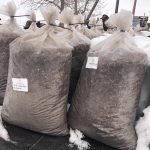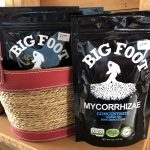These are the composts we carry during the season, although we don’t always have them all in stock at the same time:[Read More]
Water Conservation
Bagged Mulches
 Fine Woodchip Mulch: Mats tight to prevent blowing by the wind, and lets less light get to weed seeds, has more nutritive potential than cedar or redwood, decomposes rapidly against the ground.
Fine Woodchip Mulch: Mats tight to prevent blowing by the wind, and lets less light get to weed seeds, has more nutritive potential than cedar or redwood, decomposes rapidly against the ground.
Big Foot Mycorrhizae
 The Soil Food Web is an important component for healthy plants. This concentrate has not only outstanding Mycorrhizae but also carriers of Biochar, kelp and worm castings. Improve water and nutrienet uptake, root growth and plant growth while reducing transplant shock and drought stress.
The Soil Food Web is an important component for healthy plants. This concentrate has not only outstanding Mycorrhizae but also carriers of Biochar, kelp and worm castings. Improve water and nutrienet uptake, root growth and plant growth while reducing transplant shock and drought stress.
Hydrosource
This is a water-absorbing gel that absorbs 200-400 times its density in water. It is used as a soil amendment to increase the water-holding capacity of soils, reducing watering frequency by 20-40% in the ground and 50-75% in containers and hanging baskets. It greatly aids establishing of young plants, and improves soil structure, staying effective for 8 years. It has been used to help trees in drought and to reduce the water requirements of lawns. I have used this product for 12 years in producing plants from seed and found it very useful, needing very little in the soil. It is a synthetic polyacrylamide polymer that has been determined nonhazardous by OSHA, but has not passed organic standards by OMRI.
Myke Mycorrhizae
 Myke has two different blends of mycorrhizae to help when transplanting. One for vegetable gardens in the green bag and one for tress and shrubs in the blue box. Both stimulate root development and phosphorous uptake while reducing watering needs.
Myke has two different blends of mycorrhizae to help when transplanting. One for vegetable gardens in the green bag and one for tress and shrubs in the blue box. Both stimulate root development and phosphorous uptake while reducing watering needs.
